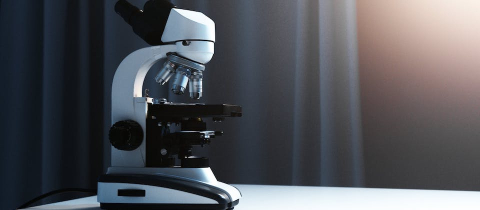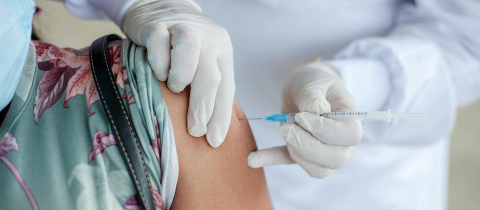We keep hearing that the COVID-19 vaccines work but some people have asked us, “How do we know that they work?”
Luckily, we have a growing trove of data that show that these vaccines are indeed effective against catching the virus, transmitting it to other people, and ending up in the hospital because of it.
Efficacy in clinical trials
First, there was the experimental work done as the vaccines were developed and tested in both animal models and in human participants. Large clinical trials were eventually conducted where some participants were randomly assigned to receive the vaccine while others were given a placebo injection. These participants were followed over three months to see how many in each group would go on to get COVID-19. This extensive testing revealed the efficacy of these vaccines, meaning how good they were at preventing infection by the SARS-CoV-2 coronavirus under the ideal and controlled circumstances of a clinical trial.
If we look at the four COVID-19 vaccines approved in Canada, their efficacy was shown to be much higher than anticipated. For Pfizer-BioNTech’s mRNA-based vaccine, its efficacy clocked in at 95%. This does not mean that 95% of people are protected from disease with the vaccine, which would imply that 5% are not and will go on to contract COVID-19. Rather, it means that in the trial there was a 95% reduction from the number of COVID-19 cases you would expect if they had not been vaccinated. So in a group of unvaccinated people in which 100 get COVID-19, 95 of these infections would have been prevented had the group been vaccinated. That’s what efficacy means.
Moderna’s mRNA vaccine performed similarly well, with an efficacy of 94.1%. AstraZeneca/COVISHIELD’s vaccine, which uses a harmless virus to deliver the DNA to make the coronavirus’ spike protein, was said to have an efficacy of 76% at reducing the risk of symptomatic COVID-19. Finally, the Janssen (Johnson & Johnson) vaccine, which works similarly to AstraZeneca’s, reported an efficacy of 66% at preventing symptomatic COVID-19.
All of this efficacy data, while exciting, is not quite the same as data on effectiveness. Efficacy is what happens in an ideal setting; effectiveness is what happens in the real world (or in a clinical trial simulating real-world conditions). For example, a new medication that has to be self-injected every week may be very efficacious when trial participants get their injections from a research nurse on schedule, or they get reminders from the research group and a follow-up to make sure the self-injection went well. But when the medication is on the market, some of its users may find the self-injections too painful, too cumbersome, or they may forget to inject themselves once in a while. Thus, the real-world effectiveness of this medication may be less than its efficacy. If efficacy is when a parent holds the saddle of their child’s bicycle to make sure their child doesn’t fall off, effectiveness is what happens when the parent lets go.
As the COVID-19 vaccines began to be authorized and rolled out in the general population, data on the vaccines’ real-world effectiveness began to accumulate, and we have every reason to be cheerful.
Effectiveness in the real world
Many of the early studies on the effectiveness of COVID-19 vaccination came out of Israel. Its vaccination campaign, which began on December 20th, 2020, was fast and effective, and the small size of the country combined with its national healthcare infrastructure made it an ideal country in which to gather data on the impact of the vaccine.
A study published in the New England Journal of Medicine on the effectiveness of Pfizer’s vaccine in the first two months of the vaccination campaign in Israel backed up what had been seen in Pfizer’s own clinical trial. Looking at nearly 600,000 vaccinated people in Israel with another 600,000 matched unvaccinated people, the authors of the study saw that two doses of the vaccine were 92% effective at preventing infection, 87% effective at preventing hospitalization due to COVID-19, and 92% effective at preventing severe disease. (The effectiveness was lower when people had only received a single dose.)
Vaccinated healthcare workers also had a lower incidence of COVID-19 infection than their unvaccinated counterparts, according to a separate Israeli study. Yet another study, which looked at the first four months of vaccination in Israel, reported an effectiveness of 95.3% of Pfizer’s vaccine. (In the interest of transparency, this study received non-financial support from Pfizer and the company contributed to the writing of the study. Over half of the authors have stock options with Pfizer.) As more and more Israelis were receiving their vaccine, the country was reopening from a lockdown over the course of the month of February. Despite the country having fully reopened by March 7, the cases of COVID-19 kept going down. The vaccines were doing their job.
In Europe, the vaccines were also performing very well. A Scottish study looking at hospitalization because of COVID-19 found one dose of Pfizer’s vaccine to be 85% effective against this outcome, while AstraZeneca’s was 94% effective. Meanwhile, in Southern Italy, the effectiveness of Pfizer’s vaccine at preventing infection after the second dose was calculated as 96% when comparing healthcare workers who were vaccinated to those who were not.
Over in the United States, a study funded by the Centers for Disease Control (and available as a pre-print, meaning it has not yet been formally reviewed by other scientists) and looking at adults living in 16 states reported an overall vaccine effectiveness of 86.9% for either Pfizer’s or Moderna’s vaccine to prevent hospitalization. In people with a condition that compromised their immune system (like cancer, HIV infection, autoimmune conditions, and the use of immunosuppressive medication), the vaccine only prevented 59.2% of hospitalizations instead of 86.9%. Meanwhile, another American study (also published as a pre-print) looking at over 62,000 people in multiple states calculated an effectiveness of 88.7% against infection after two doses of either Pfizer’s or Moderna’s vaccine. The CDC released similarly encouraging results for healthcare personnel at 33 U.S. sites across 25 states and for nearly 4,000 healthcare workers, first responders, essential and frontline workers.
The benefit that vaccinated people derive from the vaccine also extends to a certain degree to the members of their household who have not been vaccinated. When researchers studied healthcare workers in Finland who had or had not received the first dose of either Pfizer’s or Moderna’s vaccine, they found that the vaccine provided protection against both the vaccinated healthcare worker and their unvaccinated household members. (This was yet again a pre-print, and one of the authors’ employers has a grant from Pfizer.) This “indirect effectiveness” to the unvaccinated family members was estimated at 42.9% ten weeks after dose 1. In a large study conducted in England, the likelihood of household transmission between a vaccinated person and their unvaccinated family was 40 to 50% lower than in households where no one was vaccinated. Finally, a pre-print out of Israel was just released which provides even more evidence of the vaccine preventing many cases of household transmission. (One of the authors has received consulting fees from Pfizer on an unrelated topic.)
These results should not be surprising: this is, after all, how community (or herd) immunity works. The more people are vaccinated against a virus, the harder it will be for the virus to get transmitted to an unvaccinated person. While the clinical trials leading up to their authorization did not test to see if the vaccines could specifically prevent transmission from person to person, we now have evidence from real-world studies that they indeed do.
Limitations to this body of evidence
Studies are never perfect, and the numbers quoted above have limitations. The vast majority of the data used in these studies comes from the period of December 2020 to March or April 2021, when the now-predominant delta variant of the virus was still relatively uncommon in the world. The good news is that, according to a recent study in England, Pfizer’s and AstraZeneca’s COVID-19 vaccines seem to work really well against the delta variant, with only a modest decrease in their effectiveness.
Another limitation of these effectiveness studies is that they looked at data from the early days of the vaccine roll-out, which often means people received Pfizer’s vaccine. I look forward to more effectiveness data on the other authorized vaccines.
The time frame chosen also means that the people eligible for vaccination tended to be older adults and healthcare workers at a higher risk, which could have skewed the results away from perfectly representing an average population. And when these individuals were matched to unvaccinated people in order to compare the two groups, it’s possible the match was not perfect. People willing to get vaccinated may be more likely than people unwilling to get vaccinated to adopt precautionary measures like mask-wearing, and those measures may have played a role in their reduced rate of infection. Then again, once vaccinated, a person may be more willing to participate in high-risk activities. The potential bias cuts both ways. A clinical trial, where people are randomized to either receive the intervention or a placebo, typically bypasses this problem, but in the real world, the vaccine haves and have-nots are not always perfectly comparable.
As for the differences in the effectiveness percentages reported by all of these studies, they boil down to the specific populations that were looked at, the study designs the researchers used, and whether or not testing for COVID-19 was done on a regular basis or only when symptoms came up.
Despite their limitations, these real-world studies, combined with the large clinical trials that put these vaccines to the test and with newer trials done to test these vaccines against the new variants and in subpopulations that were not part of the original trials, all point in the same direction: the COVID-19 vaccines work and work really well.
The final piece of the puzzle is a more sombre one: nearly all U.S. deaths involving COVID-19 are now among the unvaccinated. In Canada, the majority of COVID-19 deaths are also among unvaccinated people. Being unvaccinated is not always a choice. In many countries, it is mainly due to a lack of doses. While 70% of all Canadians have received at least one dose, that number goes down to 27% for the continent of Asia and it plummets to 3% for the whole of Africa. But in countries where the vaccine is available, actively refusing it means foregoing the clear benefits of immunization.
Take-home message:
-The COVID-19 vaccines that have been authorized for use in Canada were shown to be efficacious in large clinical trials
-Many studies have since been done confirming their real-world effectiveness against infection, hospitalization and even, to a lesser degree, at preventing transmission to unvaccinated members of the household
-While real-world studies have limitations, the entire body of evidence clearly points in the direction of the COVID-19 vaccines being very good against the disease, and early data show only a modest decrease in effectiveness against the delta variant







